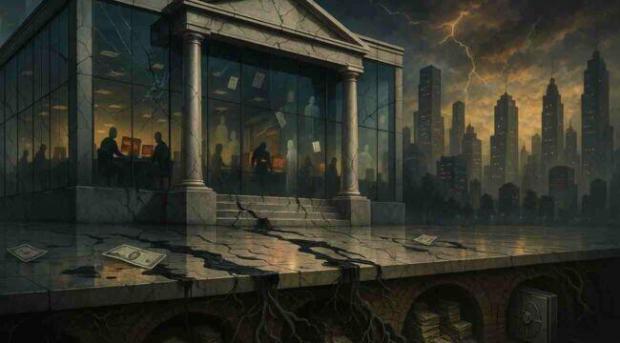
Breaking News
 Who Really Owns America (It's Not Who You Think)
Who Really Owns America (It's Not Who You Think)
 Canada Surrenders Control Of Future Health Crises To WHO With 'Pandemic Agreement': Report
Canada Surrenders Control Of Future Health Crises To WHO With 'Pandemic Agreement': Report
 Retina e-paper promises screens 'visually indistinguishable from reality'
Retina e-paper promises screens 'visually indistinguishable from reality'
 Unearthed photos of 'Egypt's Area 51' expose underground complex sealed off...
Unearthed photos of 'Egypt's Area 51' expose underground complex sealed off...
Top Tech News
 Future of Satellite of Direct to Cellphone
Future of Satellite of Direct to Cellphone
 Amazon goes nuclear with new modular reactor plant
Amazon goes nuclear with new modular reactor plant
 China Is Making 800-Mile EV Batteries. Here's Why America Can't Have Them
China Is Making 800-Mile EV Batteries. Here's Why America Can't Have Them
 China Innovates: Transforming Sand into Paper
China Innovates: Transforming Sand into Paper
 Millions Of America's Teens Are Being Seduced By AI Chatbots
Millions Of America's Teens Are Being Seduced By AI Chatbots
 Transhumanist Scientists Create Embryos From Skin Cells And Sperm
Transhumanist Scientists Create Embryos From Skin Cells And Sperm
 You've Never Seen Tech Like This
You've Never Seen Tech Like This
 Sodium-ion battery breakthrough: CATL's latest innovation allows for 300 mile EVs
Sodium-ion battery breakthrough: CATL's latest innovation allows for 300 mile EVs
 Defending Against Strained Grids, Army To Power US Bases With Micro-Nuke Reactors
Defending Against Strained Grids, Army To Power US Bases With Micro-Nuke Reactors
The Bezzel: Is It 1925 All Over Again?

Tricolor went bankrupt due to allegations of fraud, including double-pledging of collateral, which led lenders to halt financing.
"Mike, you should assume that whenever something like that happens, we scour all process, all procedures, all underwriting, all everything, and we think we're okay in other stuff," said Dimon.
"But I – my antenna goes up when things like that happen. And I probably shouldn't say this, but when you see one cockroach, there are probably more."
Dimon's instinct about there being more big credit problems lurking beneath the surface of the US economy is correct, but even he may not fully appreciate the scale of the threat. The collapse of auto parts maker First Brands has revealed an enormous fraud at the center of the $2 trillion market for leveraged loans. Based on losses reported so far and the numerous acts of fraud emerging, half of the leverage loan market may end up being lost to investors.
There are a growing number of examples of malinvestment in the US economy, but much of it springs from excessive liquidity supplied by the Federal Open Market Committee. Since 2008 and particularly since COVID in 2020, the Fed did too much. While classical economic theory states that reserves at the central bank do not impact prices, in fact we can see that the "ample reserve" policy first adopted by the Fed under Chairman Ben Bernanke fueled a massive increase in fraudulent activity and inflation.
In a speech to the National Association of Business Economists, Fed Chairman Jerome Powell admitted that the Fed added too much liquidity to the economy after 2020. "With the clarity of hindsight, we could have—and perhaps should have—stopped asset purchases sooner," said Powell. "Our real-time decisions were intended to serve as insurance against downside risks." But the downside risk created by the FOMC is that mortgage delinquency may rise dramatically even as interest rates fall into 2026.
Even as the Trump Administration looks for ways to boost housing, this by again lowering interest rates, there are troubling signs of both inflation and deflation in the residential sector. In blue states, home prices continue to rise because of a dearth of new home construction. In red states that are more attractive for home builders, however, over supply is starting to force prices down from Florida to Texas. Lower interest rates may slow the home price correction, but we anticipate a significant drop in home values by 2028.

 SpaceX Heat Shield and Starship Mass Production
SpaceX Heat Shield and Starship Mass Production

